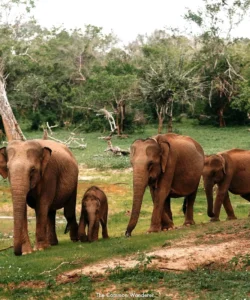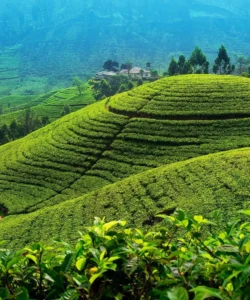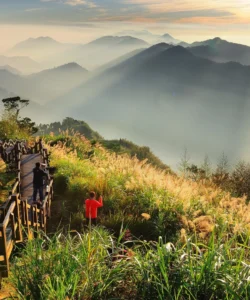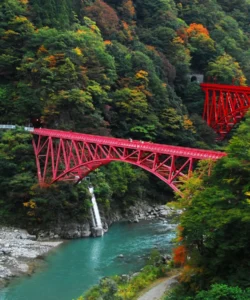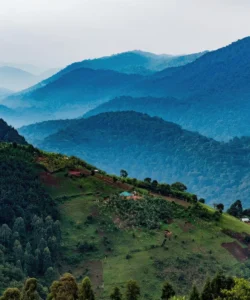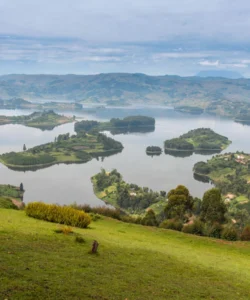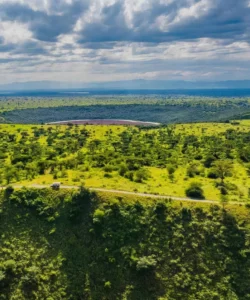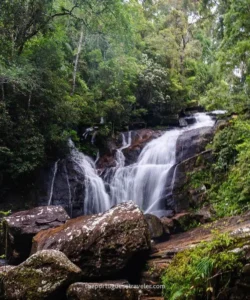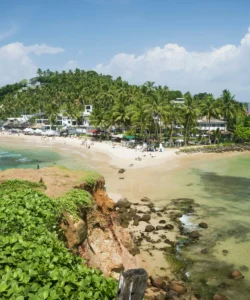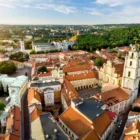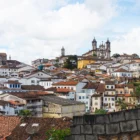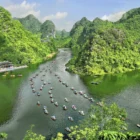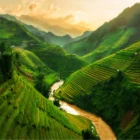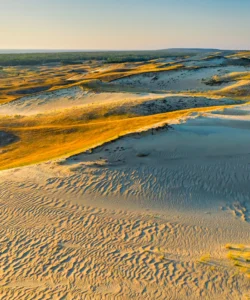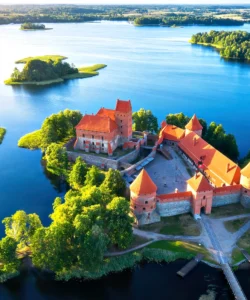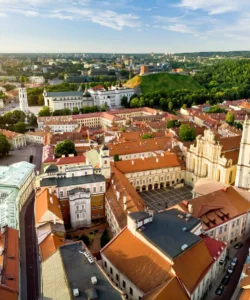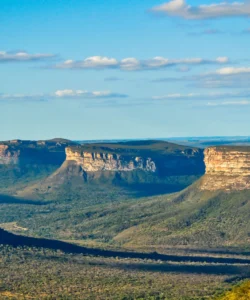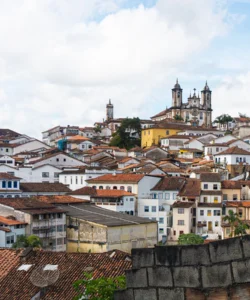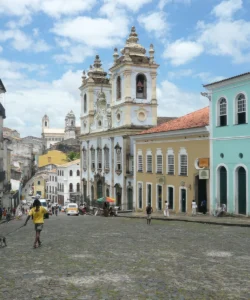Kidepo Valley National Park, often hailed as Uganda’s most isolated yet arguably its most spectacular national park, is a true wilderness sanctuary located in the remote northeastern corner of the country. Bordering South Sudan and Kenya, this vast expanse of rugged savanna, dramatic mountains, and seasonal rivers offers a unique East African safari experience, distinct from the more frequented parks. Known for its breathtaking scenery and high concentration of unique wildlife, Kidepo has earned a reputation as one of Africa’s finest untouched wildernesses.
Name: Kidepo Valley National Park
Address: Karamoja Sub-region, Northeastern Uganda. The park has two main entrance gates: Lokumoit Gate (for visitors coming from Kitgum/Gulu) and Nataba Gate (connecting to the southeastern side).
How to get there:
Reaching Kidepo Valley National Park, involves a significant international journey followed by domestic travel within Uganda, known for its remoteness:
- From Entebbe/Kampala (Uganda) to Kidepo Valley National Park:
- By Road (Long but rewarding): This is a significant journey, typically taking 10-12 hours from Kampala (approx. 570-790 km / 350-490 miles) depending on the route. Roads can be challenging, especially in the wet season, and a sturdy 4×4 safari vehicle is essential. Many travelers break up the trip with an overnight stop in Gulu, Kitgum, or at Ziwa Rhino Sanctuary.
- Western Route: Kampala – Karuma – Gulu – Kitgum – Kidepo (approx. 10 hours).
- Eastern Route (through Karamoja): Kampala – Mbale – Sironko – Moroto – Kotido – Kaabong – Kidepo (approx. 12 hours). This route offers cultural encounters in the Karamoja region.
- By Air (Faster Option): Daily domestic charter flights operate from Entebbe International Airport or Kajjansi Airfield (near Kampala) to Kidepo Valley Airstrip (Apoka Airstrip) within the park. Flights take approximately 1.5-2 hours. This is the most convenient way to reach the park.
- By Road (Long but rewarding): This is a significant journey, typically taking 10-12 hours from Kampala (approx. 570-790 km / 350-490 miles) depending on the route. Roads can be challenging, especially in the wet season, and a sturdy 4×4 safari vehicle is essential. Many travelers break up the trip with an overnight stop in Gulu, Kitgum, or at Ziwa Rhino Sanctuary.
Best Time to Visit:
Kidepo Valley National Park is enjoyable year-round, but the dry season (September to March) is generally considered the best time for game drives. During these months, vegetation is sparser, and animals tend to congregate around the limited permanent water sources (primarily in the Narus Valley), making them easier to spot. The months of December to February can be very hot and dusty. The wet season (April to August) brings lush green landscapes and good birdwatching, but some roads can be muddy and challenging.
Operating Hours and Entrance Fee:
- Operating Hours: The park is generally open daily from 6:00 AM to 6:00 PM. Game drives are typically done in the early morning or late afternoon.
- Entrance Fee (for Foreign Non-Residents):
- Adults: US$40 per person per day.
- Children (5-15 years): US$20 per person per day.
- Vehicles (4×4 safari vehicle): US$150 per vehicle per entry.
- Note: Fees are per 24 hours spent in the park and are subject to change by the Uganda Wildlife Authority (UWA). Additional fees apply for activities like guided nature walks (US$30 per person), birding (US$30 per person), and ranger guides (mandatory for some activities).
Landscape and Architecture:
Kidepo Valley National Park’s “architecture” is predominantly its vast, rugged, and breathtaking natural landscape, largely untouched by human development:
- Vast Savanna Grasslands: The dominant feature is the expansive semi-arid savanna, characterized by tall grasses, thorny acacia bushes, and scattered Borassus palms. This open landscape provides excellent visibility for wildlife viewing.
- Rugged Mountains and Hills: The park is framed by impressive mountain ranges and rugged hills, most notably the Morungole Mountains (reaching 2,750 meters / 9,022 feet) in the south and the Lotukei Mountains on the border with South Sudan. These provide a dramatic backdrop and contribute to its “photographer’s dream” status.
- Kidepo and Narus Valleys: The park is defined by two seasonal rivers, the Kidepo River (to the east) and the Narus River (to the west). The Narus Valley is particularly important, as its river holds permanent water pools during the dry season, attracting large concentrations of wildlife. The Kidepo Valley is drier and often features a sandy riverbed.
- Karamojong Cultural Landscape: The park is surrounded by the semi-arid lands of the Karamojong people, a Nilotic ethnic group known for their traditional nomadic pastoralist lifestyle. Their small, basic villages and cattle enclosures (kraals) form the unique human “architecture” on the park’s fringes, offering opportunities for cultural encounters.
- Seasonal Rivers: The Kidepo and Narus Rivers are seasonal, flowing vigorously during the wet season but often drying up to sandy riverbeds with scattered pools during the dry months.
- Rocky Outcrops and Inselbergs: Scattered rocky outcrops and inselbergs (isolated rock hills) provide vantage points for predators and unique geological features.
- Kanangorok Hot Springs: Located in the Kidepo Valley, these natural hot springs are a small but interesting natural attraction within the park.
- Simple Tourist Lodges/Camps: Accommodation within and around the park includes various lodges and tented camps, ranging from budget to luxury, designed to blend with the natural environment. Apoka Rest Camp offers self-contained bandas.
What makes it famous:
Kidepo Valley National Park is famous for:
- “True African Wilderness”: Often described as one of Africa’s most authentic and untouched wildernesses, offering a remote, exclusive, and uncrowded safari experience due to its isolation.
- CNN’s “Most Picturesque Park in Africa”: CNN notably dubbed it “possibly the most picturesque park in Africa” due to its stunning landscapes, vast horizons, and dramatic mountains.
- Unique Wildlife and Endemic Species: It boasts several mammal species not found in other Ugandan parks, including cheetahs, caracals, aardwolves, bat-eared foxes, and greater and lesser kudus. It also has a significant population of the rare Rothschild’s giraffe.
- Abundant Big Game: Home to large herds of buffalo (some of the largest herds in Africa), elephants, zebras, giraffes, various antelope species (such as Uganda kob, Jackson’s hartebeest, eland, oribi), and predators like lions, leopards, and spotted hyenas.
- Birdwatcher’s Paradise: With over 470 bird species, including many endemic to the Karamoja region and the Somali-Maasai biome, it’s considered an Important Bird Area and ranks high for birding in Uganda.
- Karamojong Cultural Encounters: Opportunities to interact with the traditional Karamojong people, learning about their unique pastoralist culture, which has largely resisted modernity.
- Dramatic Scenery: The combination of vast savanna, rugged mountains, and river valleys creates a visually stunning environment, particularly during sunrise and sunset.
Differences from some other wonders:
Kidepo Valley National Park distinguishes itself from other national parks and safari destinations in several key ways:
- Extreme Remoteness and Exclusivity: Its isolated location in the far northeast makes it significantly less visited than Uganda’s other major parks (like Murchison Falls or Queen Elizabeth). This results in a much more exclusive and intimate safari experience, with fewer vehicles and a profound sense of unspoiled wilderness. This is its primary differentiator.
- Unique Dry-Country Species: While sharing some wildlife with other parks, Kidepo is the only park in Uganda where you can reliably see cheetahs, caracals, and bat-eared foxes, along with other species adapted to its semi-arid environment. This unique assemblage of fauna is a major draw.
- Distinct Landscape with Majestic Mountains: Its landscape, characterized by vast open plains framed by rugged, distant mountains (especially the Morungole Range), offers a more classic “African wilderness” feel, often resembling parks in Kenya or Tanzania, which is visually distinct from the more varied or forested landscapes of other Ugandan parks.
- Seasonal River Focus: The dynamics of the seasonal Kidepo and Narus Rivers (drying to pools in the dry season) play a crucial role in wildlife congregation and viewing strategies, making the water sources even more critical hubs than in parks with permanent major rivers.
- Authentic Karamojong Cultural Immersion: Its location within the Karamoja region allows for unique and authentic cultural encounters with the Karamojong people, whose traditions are less influenced by mass tourism than some other tribal groups.
- “Off-the-Beaten-Path” Vibe: For travelers seeking a truly off-the-beaten-path African safari adventure, Kidepo delivers an experience that feels raw, wild, and less commercialized than more popular safari circuits.
In essence, Kidepo Valley National Park is an extraordinary and truly wild wonder, a remote jewel of Uganda that offers unparalleled scenic beauty, unique wildlife encounters, and an exclusive safari adventure in one of Africa’s most breathtaking and untamed landscapes.





















